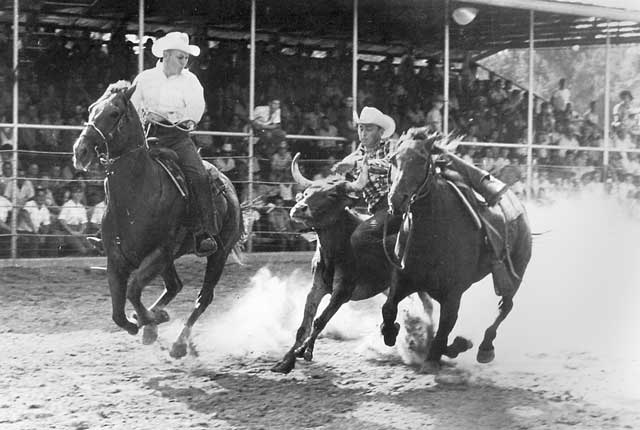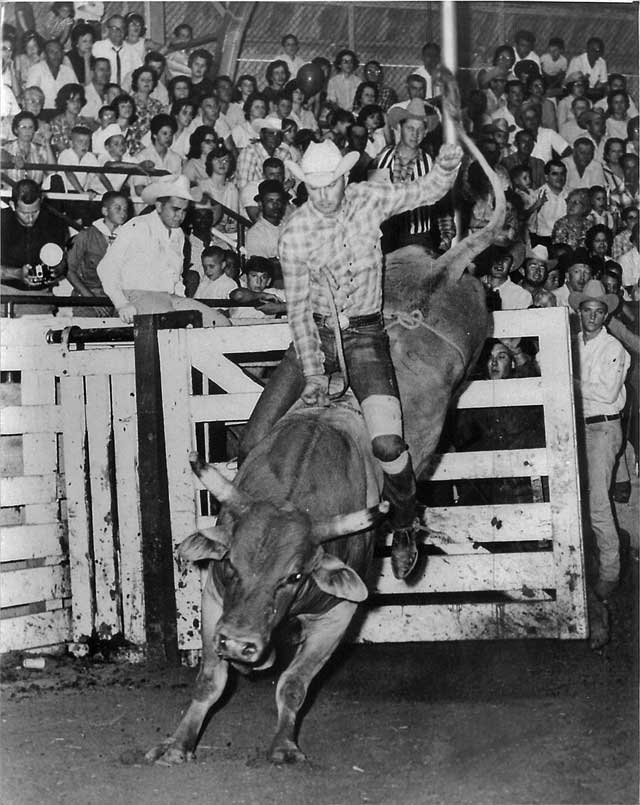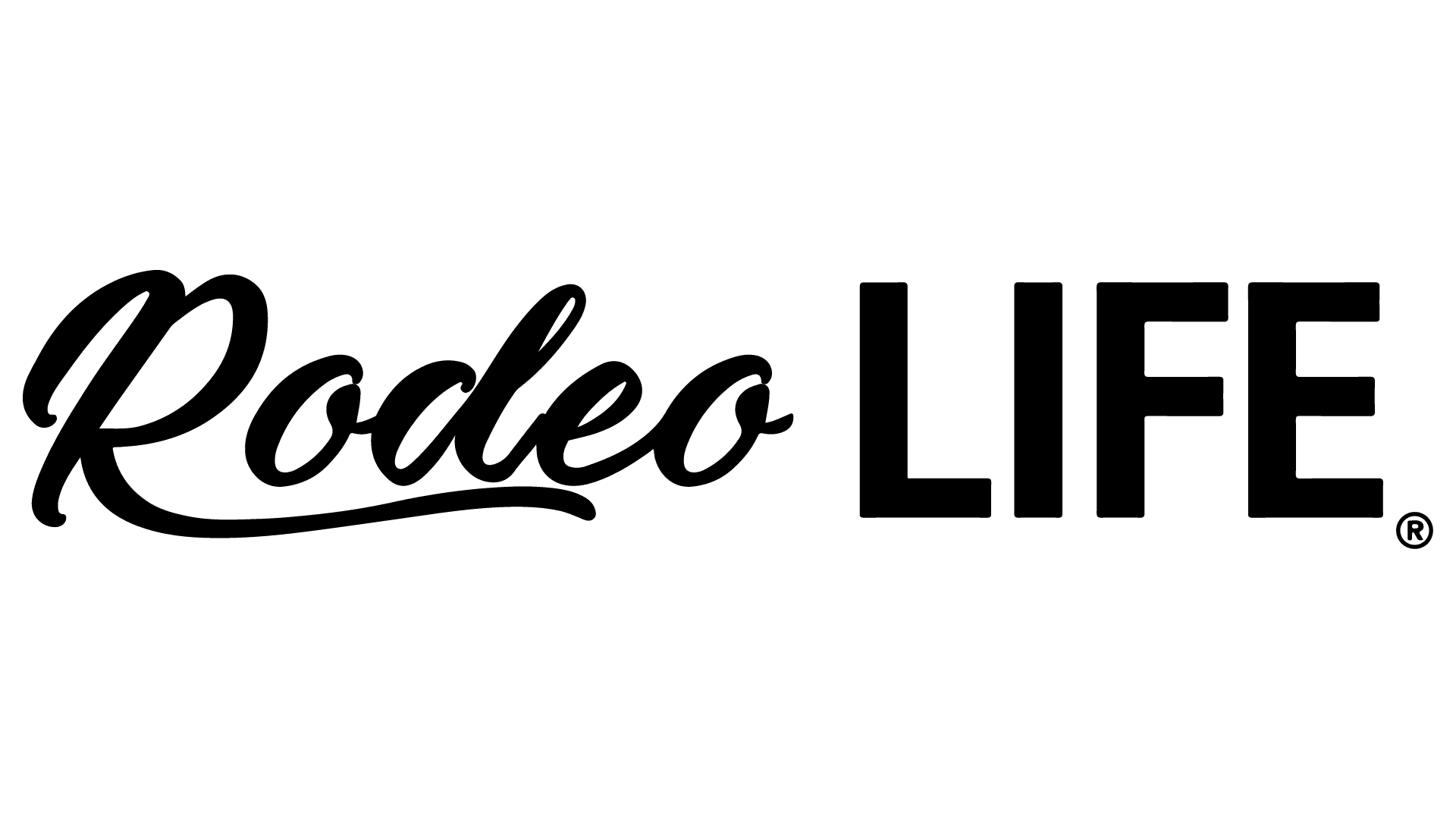Dilton and Pat Emerson of Bossier City, Louisiana, know the value of a horse shoe. Keeping equine athletes of all disciplines shod has sustained the husband and wife for many years, and their bootprints through rodeo history are accompanied by their ingenuity. This includes inventing a now widely-used anvil and starting their own horseshoe supply business – one of the largest in the country. They also support the rodeo industry with their time, serving on the boards of several rodeo organizations, and most recently, helping organize the Gold Card Reunion in Las Vegas during the WNFR. “The reunion originated last year, and we had about 150 gold card members come,” says Dilton, chairman of the reunion board and a gold card member himself. Shawn Davis, manager of the PRCA and one of Dilton’s longtime rodeo friends, recently asked Dilton to help organize the reunion. Open to all PRCA gold card members, the reunion takes place this year in the Thomas & Mack Center on December 8th. “We have someone in charge of getting interviews during the reunion for the Pro Rodeo Hall of Fame in Colorado Springs, and there will be slideshows and storytelling,” Dilton describes.
His own rodeo career with the PRCA – known at the time as the RCA – began in 1954, the year he married Pat. The couple – both born in 1936 – were raised one town over from each other, Dilton in Taylor, Arkansas, and Pat in Bradley, Arkansas. Horses were Pat and her family’s means of transportation, but Dilton didn’t own a good horse until he was in his 40s. Instead, he competed in all three roughstock events and steer wrestling. “His family thought he was totally crazy and doomed from day one,” Pat recalls with a laugh. Yet Dilton paid all his expenses and made friends with competitors like Shawn Davis, Tom Nesmith, who put Dilton on his horse Old Brown, and Neal Gay. “Neal took a liking to me when I was a kid and helped me out, and I worked for stock contractor Tommy Steiner. I got on everything he turned out,” says Dilton. “Steiner had a bronc saddle in his tack room that became mine, and I had a bareback riggin’ of my own.” His bronc saddle is now on display in the Lynn Hickey American Rodeo Gallery of the National Cowboy and Western Heritage Museum in Oklahoma City, its cinch tightened on a bronc sculpture rearing from the chutes.



Near the time Dilton’s RCA career began, Pat tried her hand at riding bareback horses in the Girls Rodeo Association (GRA). “I hadn’t thought about competing, but I had an older sister that rode roughstock. I was staying with her one summer and she took me to rodeos,” says Pat. “There weren’t more than six or seven bareback riders, but enough to have a rodeo. I messed with it for two or three years, and did exhibitions in saddle bronc riding the summer of ‘55. But once I started raising our three kids, I quit.”
Dilton was rodeoing with Pat’s brother when the couple met. While their children – Peaches, Joe, and Ross – were young, Pat worked as a secretary for several steel firms and Dilton rodeoed full time. When he eased off the gas pedal in the mid 1960s to start shoeing horses on racetracks, Pat was a mutuel teller, cashing tickets for the bidders. They travelled with their children to Detroit, Chicago, Omaha, Nebraska, and the Louisiana Downs in Bossier City, Louisiana, where they eventually settled. “We never had a horse trailer when we rodeoed or worked on the racetracks, we rented apartments,” says Pat. “We worked together for three or four years before starting our horseshoe supply business. Everything Dilton has done, he’s taught himself.”
“When I started shoeing horses, it was at an all-time low for farriers,” Dilton recalls. “A big horseshoe company went out of business in 1965, and people were predicting that it was the end of the horse era. Back then, they didn’t have playdays or horse shows. Horses were mainly used on ranches for working cattle, and the ranchers did their own shoeing.” Yet the Emersons still saw a need for horseshoeing, though they never intentionally set out to start a business. “Dilton always had a good supply of stock that he shod with, which a lot of horseshoers didn’t, so they’d buy or borrow from him. He got a distributorship specifically for thoroughbred racing shoes, and then we were able to get distributorships for bigger companies.” Within ten years, Emerson Horseshoe Supply was one of the larger horseshoe suppliers in the business. The anvil Dilton designed in the mid 1990s also set them apart. “There’s a lot of nickel in the anvil, which gives it good bounce-back,” he explains. The Emerson Anvil is preferred for many horseshoeing contests and even knife makers, and is shipped across the country and even as far as England. Their anvil is in use in the bladesmithing TV show Forged in Fire, and Dilton designed a commemorative 25th anniversary anvil for the 2004 World Championship Blacksmiths’ Competition, held during the Calgary Stampede.
Emerson Horseshoe Supply has been distributing horseshoes and farrier supplies for 35 years, the shop right next door to the Emerson’s house. “It works well for waiting on customers after hours. Before cell phones and ordering ahead of time, I’d be up at six in the morning selling horseshoes,” says Pat, who runs the store. “Grandma is really amazing – she can tell you about all the shoes, their differences, and the prices,” says Seth Emerson, their grandson. He’s worked in the store since he was old enough to stock shelves, and only recently left to become an auditor for the state and continue his rodeo career, tie-down roping in the PRCA. “My grandparents have done so much for me, and it was very rewarding for me to work with them. My grandpa started team roping in his 60s, and I’ve always roped at their place. I’ve been good friends with Shane Hanchey since high school, so he’s stayed there. I also used to hold a big jackpot there and guys like Cody Ohl and Marty Yates would come and Grandma would cook for them. Grandpa’s always been there when I rope, even if it’s cold, and then he pulls the truck up next to the arena to watch.” The Emersons also have three granddaughters, Cassie, a breakaway roper, Stewart, an aspiring actress in New York City, and Kirby, a junior in college at the University of Edinburgh in Scotland.
Prior to team roping, Dilton took up chuckwagon racing, living just a few hours from the National Championship Chuckwagon Races in Clinton, Arkansas. Dilton and his team, racing under Emerson Horseshoe Supply, won the classic division in 1997 racing thoroughbreds. He built his own wagon, weighing approximately 1,000 pounds, but his interest moved to team roping around 2000. He currently heels in the USTRC and local team roping associations. “I practice three times a week, but I generally go to Stephenville (Texas) so I can rope with Rickey Green,” says Dilton.
Pat enjoys snow skiing, and is planning a skiing trip with her granddaughters and grandson’s girlfriend in February. She’s also active in her church, and one of 50 rodeo wives that make up H.A.N.D.S. (Helping Another Needy Diva Survive). The organization, started by Sharon Shoulders and Donna McSpadden, sends anything from money, food, cards, or even personal visits to rodeo families going through hard times. “We were in Oklahoma City recently for Rodeo Hall of Fame inductions, and we also go up to Colorado Springs for the Pro Rodeo Hall of Fame, and then Las Vegas in December,” says Pat. “We’re both very active and very social. We’ve been blessed with good health, good friends, and good family!”









